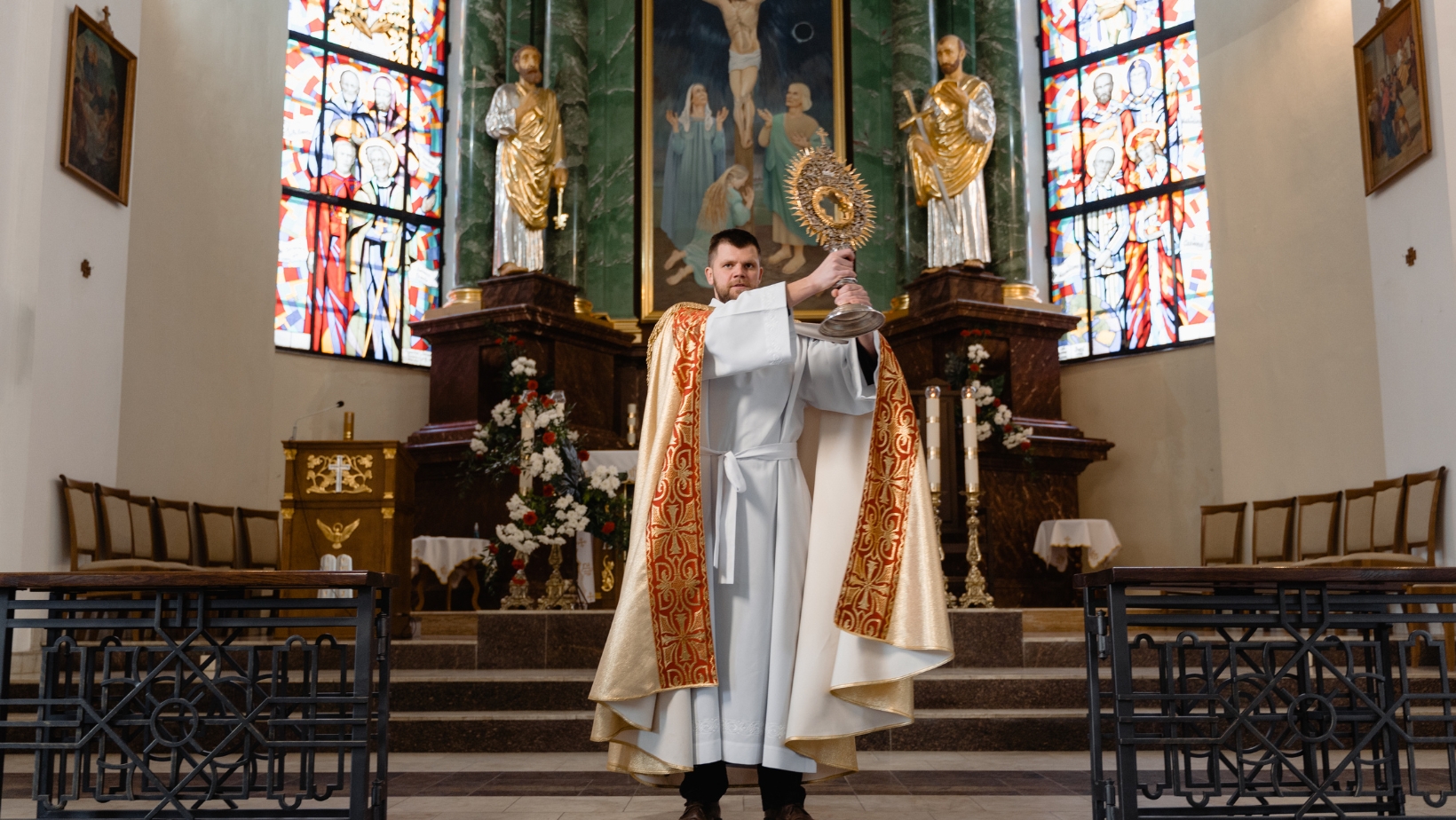Liturgical colors hold deep symbolic meaning in Christian worship, reflecting different seasons, feasts, and religious themes. The appropriate selection of vestments enhances the spiritual experience and underscores the significance of each liturgical celebration. At HAFTINAUSA, a wide range of liturgical garments are available and designed in accordance with traditional color symbolism. This article explores the meaning of liturgical colors and how to select the right vestments for various occasions.
White: Purity, Joy, and Celebration
White is the color of purity, holiness, and victory, commonly associated with Christ’s resurrection and divine glory. It is worn during joyful occasions such as Christmas and Easter, as well as on feasts dedicated to the Virgin Mary, angels, and saints who were not martyrs. White vestments symbolize the light of Christ and the promise of eternal salvation, making them an essential part of any liturgical wardrobe.
Red: The Fire of the Holy Spirit and the Blood of Martyrs
Red signifies the presence of the Holy Spirit and the blood of martyrs who sacrificed their lives for the faith. It is worn on Pentecost, symbolizing the descent of the Holy Spirit upon the apostles. Additionally, red vestments are used on Good Friday and feasts of martyred saints, representing both sacrifice and divine power. The vibrant color serves as a powerful reminder of Christ’s passion and the courage of those who followed Him.
Green: Hope, Growth, and Ordinary Time
Green is the color of hope and renewal, commonly worn during Ordinary Time, the longest season in the liturgical calendar. It symbolizes spiritual growth and the ongoing journey of faith.

The use of green vestments in daily Mass and Sunday services outside of feast days reflects the continuous grace of God and the flourishing life of the Church. HAFTINAUSA offers finely crafted green vestments suitable for everyday liturgical use.
Purple: Penance, Preparation, and Mourning
Purple, or violet, represents penance and preparation, making it the primary color for Advent and Lent. During these solemn seasons, the faithful are called to spiritual reflection, fasting, and repentance. The deep tone of purple vestments conveys humility and reminds worshippers of the need for inner purification. Additionally, purple is used in funeral services, signifying mourning and the hope of resurrection.
Gold and Rose: Special Feasts and Joyful Anticipation
Gold vestments are often used as an alternative to white on particularly solemn occasions, emphasizing the splendor of major feasts such as Christmas and Easter.

Rose is worn on Gaudete Sunday (the third Sunday of Advent) and Laetare Sunday (the fourth Sunday of Lent) to signify joyful anticipation amid penitential seasons. These colors bring a sense of celebration and encouragement, reflecting the Church’s message of hope.
Choosing the Right Vestments from HAFTINAUSA
Understanding the significance of liturgical colors helps in selecting the appropriate vestments for different occasions. HAFTINAUSA offers a comprehensive collection of chasubles, stoles, and other liturgical garments crafted in accordance with these traditions. Whether for a solemn Lenten service or a festive Easter Mass, their high-quality designs ensure that each vestment enhances the sacredness of worship. By choosing vestments that align with the liturgical calendar, clergy can enrich the spiritual atmosphere of every celebration.
By embracing the rich symbolism of liturgical colors, churches, and clergy can create a visually meaningful and spiritually uplifting environment for worship. HAFTINAUSA’s dedication to quality and tradition makes it a trusted source for beautifully crafted vestments, ensuring that every liturgical celebration is adorned with the appropriate colors of faith.
